This post may contain affiliate links from products and services we love and trust.
This is the third post in a series about focal length for food photography. Check out the other posts in this series, 35mm, 50mm & 105mm.
The 85mm focal length is considered a portrait focal length. So can you use it for food photography and what are the results? That’s what we’ll discover in this post.
It goes without saying that my 85mm lens is one of my favourites. Perhaps because I prefer a minimalist style when it comes to food photography. It helps me to cut out the noise and focus on the most important elements of any food story I tell.
Here are some of the pros and cons of this much-beloved food portraiture lens.
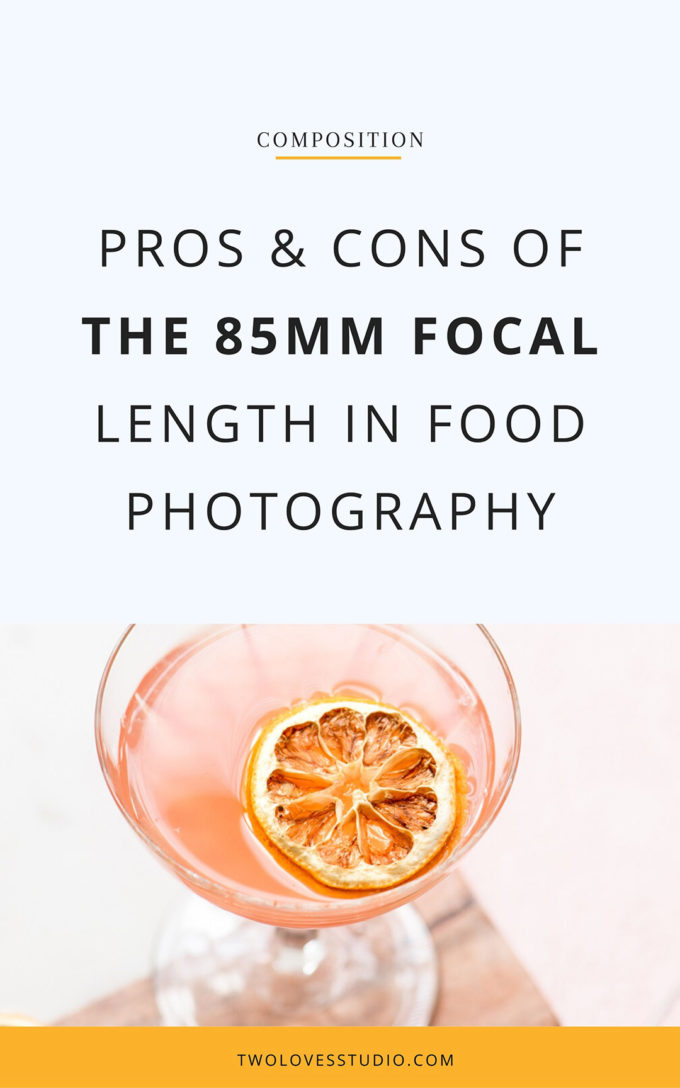
Portrait Lens
The 85mm focal length is desired the most by portrait and wedding photographers. Its narrow focal length, large maximum aperture and minimum focusing distance are all targeted at shooting portrait subjects.
Food photography is not considered a portrait niche, but for me, food portraiture is a style that I gravitate towards.
I like to use this lens as I can capture a ‘portrait’ of the food and a few supporting elements to tell a food story. For me, this lens helps me showcase the hero food, making it the undeniable star in the frame.
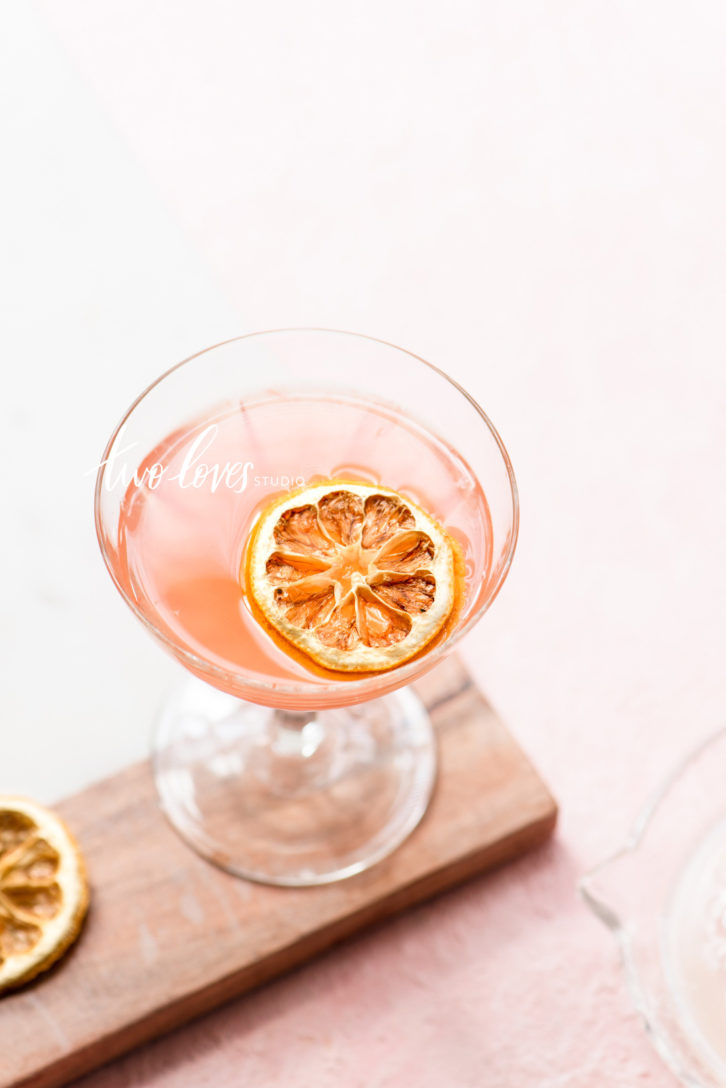
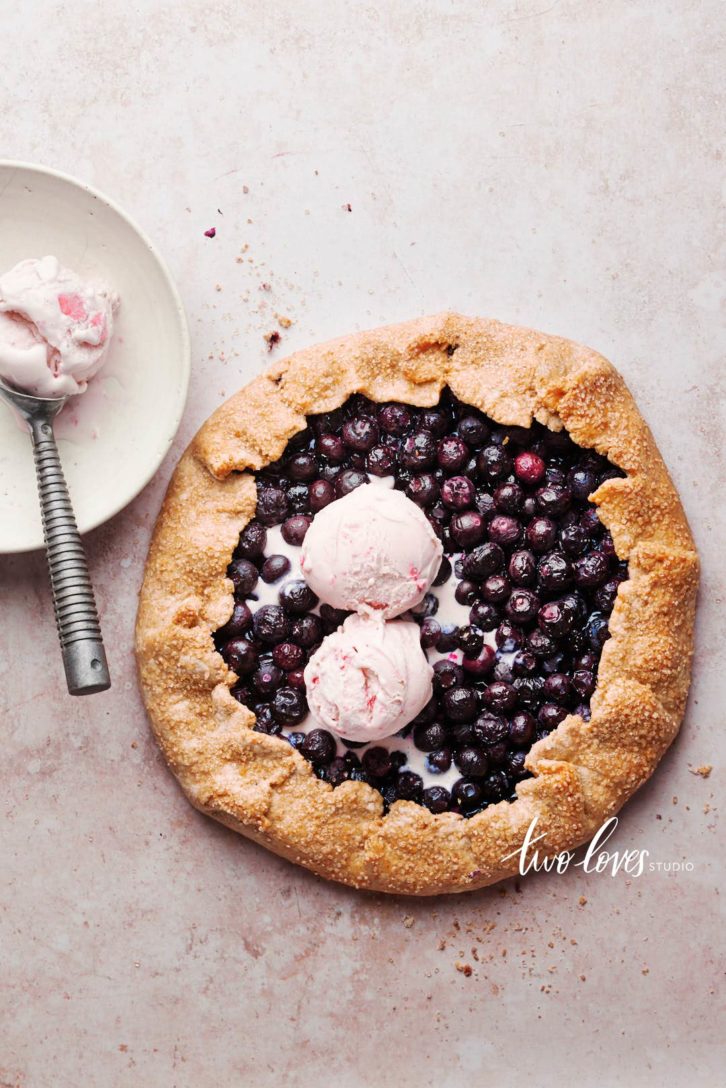
Large Maximum Aperture
The maximum aperture on the 85mm lens is shallow. With an aperture of 1.4-1.8, there are two important benefits to this lens.
You have the ability to capture a very large aperture and hence shallow depth of field. This also allows for more light to fall onto the camera’s sensor assisting food photographers shooting indoors in low light situations.
Although I tend not to shoot this shallow, and it’s really designed for those blurry background portrait shots, it’s definitely a nice to have feature.
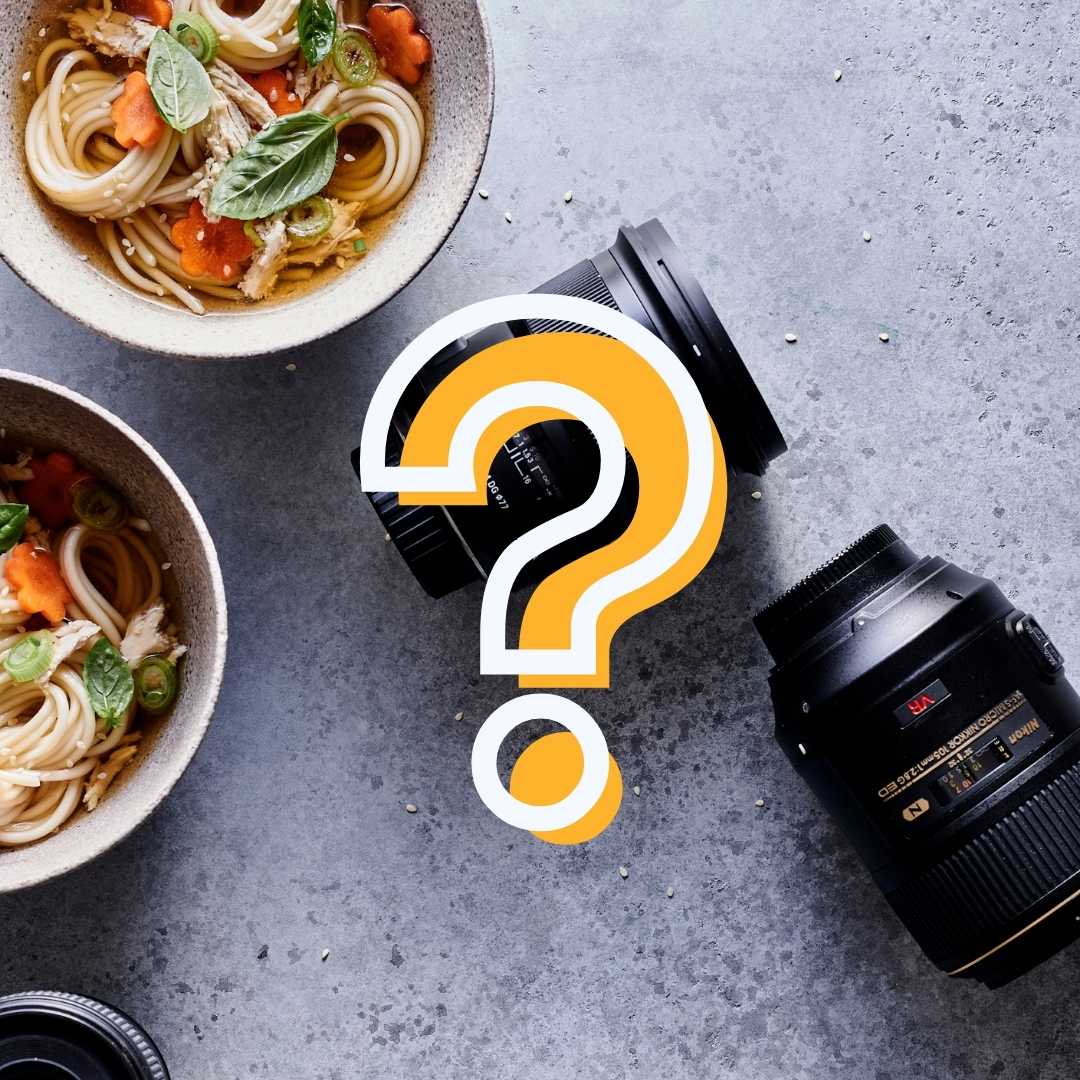
Lens Quiz
Which Lens Matches Your Food Photography Style?
Is A Tight Focal Length Aids Minimalist Composition
The 85mm focal length is considered a narrow focal length. The opposite of a wide-angle focal length, you’ll find that using this lens captures a very tight crop.
And that tight crop aids minimalist composition. By cutting out the extra space in which to build composition, you’re left with little space (hence cutting out the noise).
When there is less space in the frame, we need less food and props to build our composition. For me, this lens aids the minimalist composition that I love. Even with just one or two props, we can make out shots look aesthetically pleasing and have organic movement.
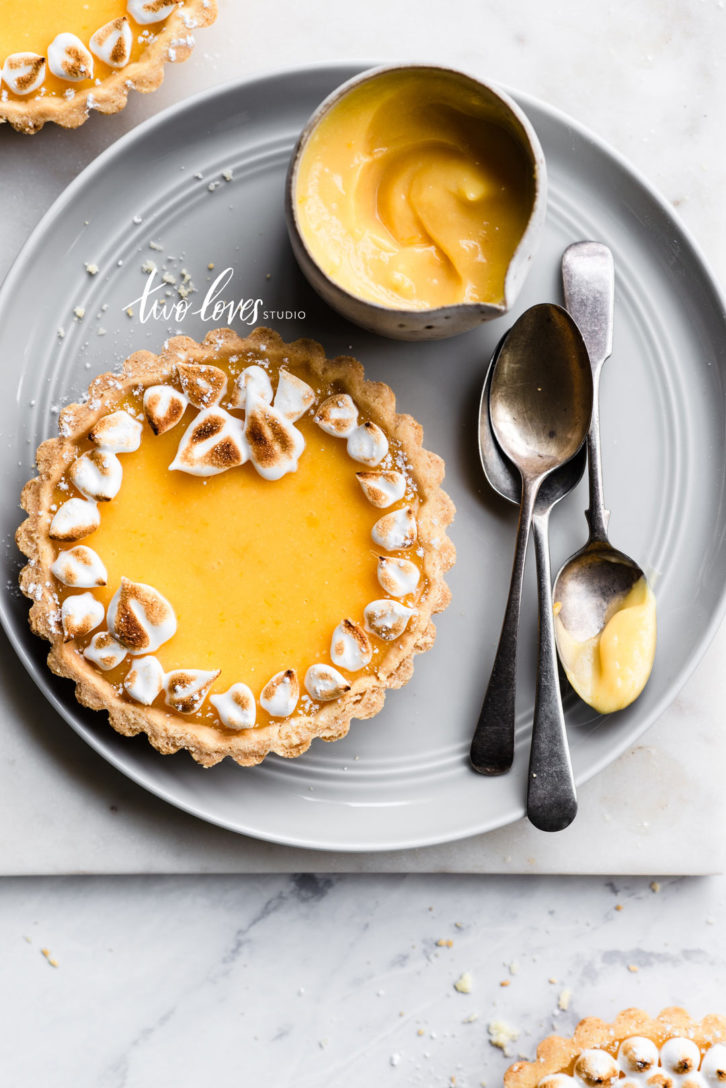
Can Reduce Perspective Distortion
Distortion is something that happens to ‘distorts’ or ‘deforms’ our image.
Have you ever looked at a photo and felt ‘something doesn’t feel right’? Like the food at the edge of the frame appeared to be ‘falling out’ or ’tilting’?
Perspective distortion has to do with the relative perspective of the subject to the camera and the focal length of the lens you’re using.
Perspective distortion with your wide angle lens will occur when you try to get up close to the subject.
The size of your subject will look disproportionally large compared to the background. This is what causes distortion.
RELATED: Two Types of Distortion That Can Harm Your Food Photos.
The solution for this is instead of using a wide-angle lens and getting up close to your subject, you use a narrow lens and get further away.
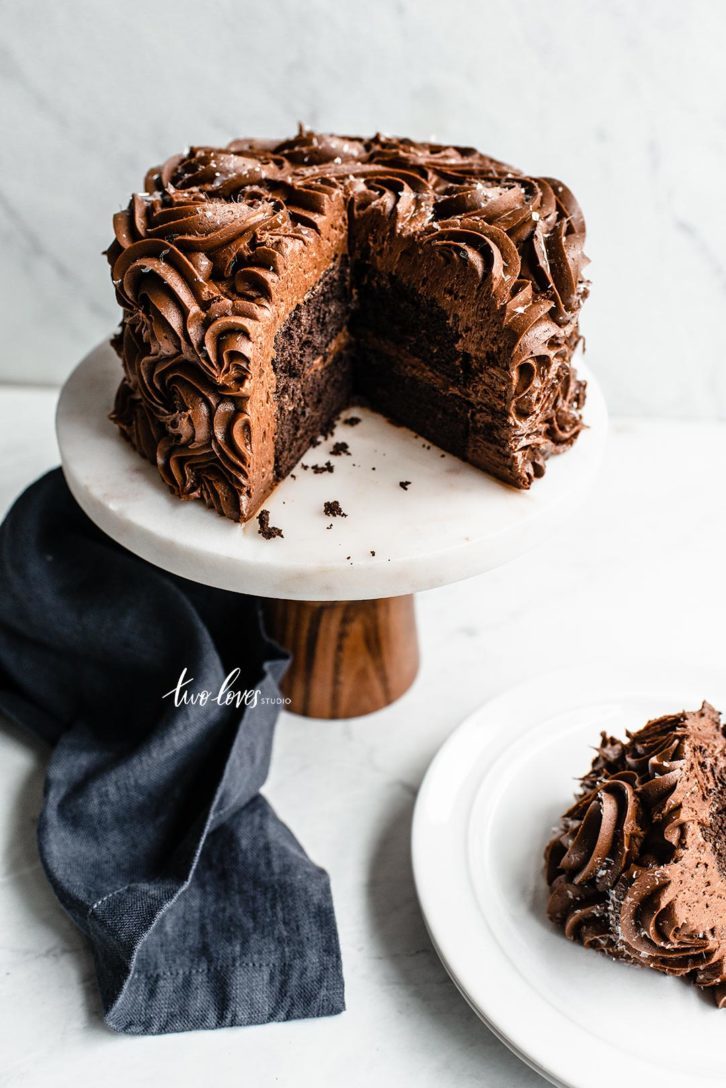
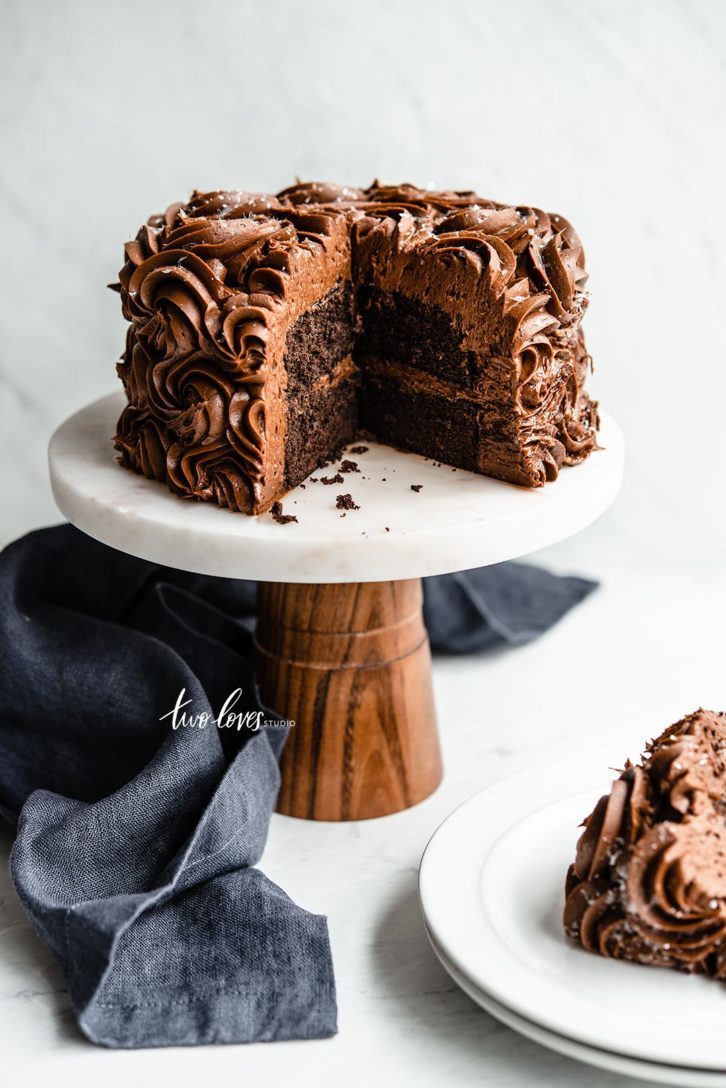
85mm Focal Length & Minimum Focusing Distance
The major drawback of this lens is that its minimum focusing distance is rather large for food photography. With a minimum focusing distance of around 2.8 ft or 85cm, you can’t get up close to your subjects.
That’s where you will start to use a macro lens.
RELATED: Which Macro Lens For Food Photography Should You Buy?
There are often times where I set up the tripod with my 85mm lens, only to find that I can’t focus due to the minimum focusing distance. This usually impacts the shoot if I need to take a shot up close, and I need to switch lenses.
On occasion, I will have to abandon the lens altogether as the minimum focusing distance prevents me from shooting the desired crop.
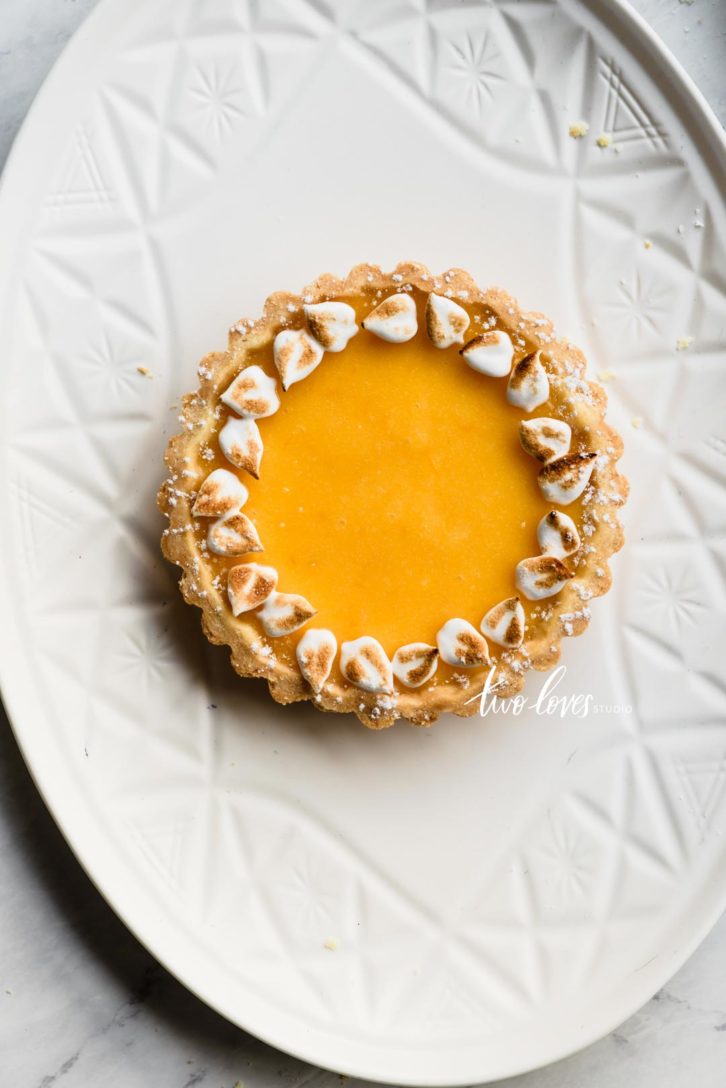
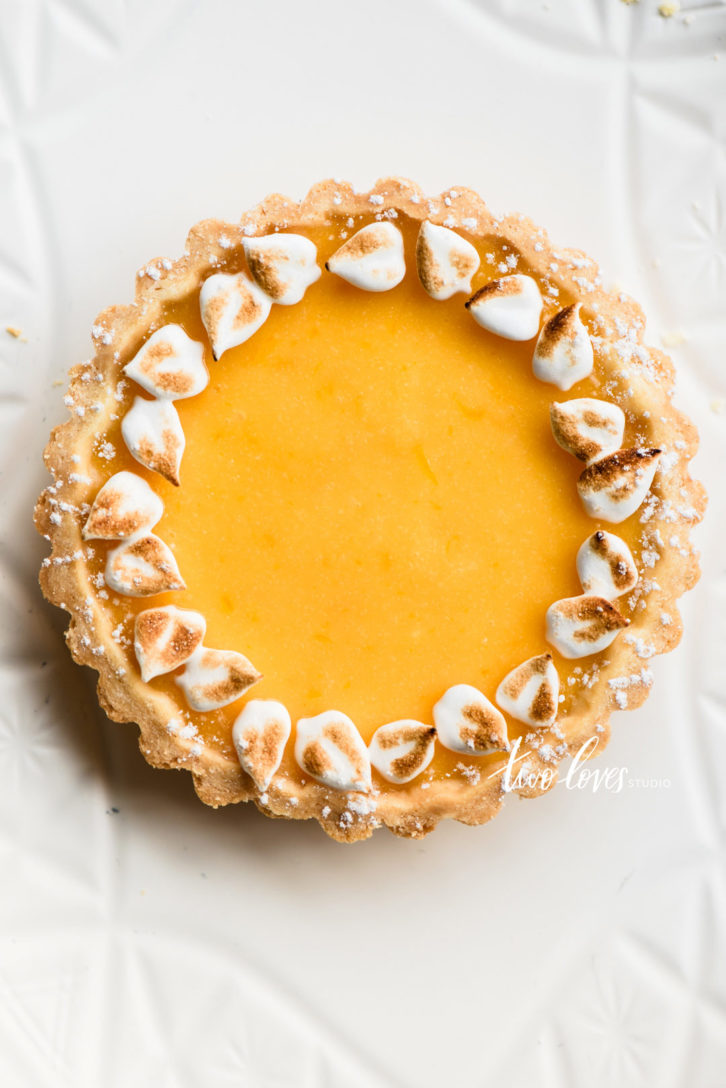
Do you use the 85mm focal length? What are your thoughts on it?
Two Loves Studio was not paid to write this post, however, it may contain affiliate links. If you purchase an item from an affiliate link, we do get a commission on the sale which helps us run this site. Only affiliates for products/services we believe in appear on this site.

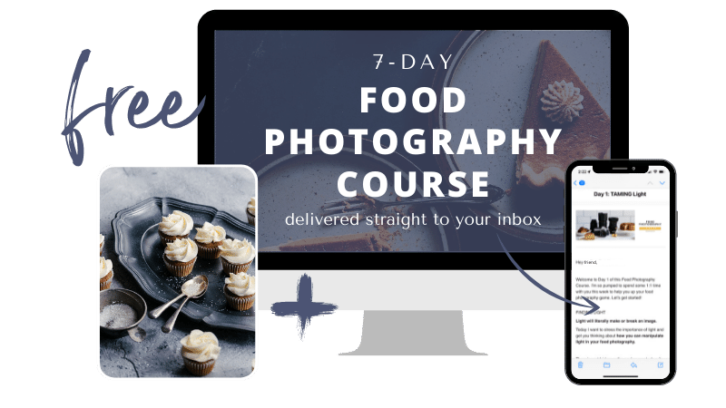

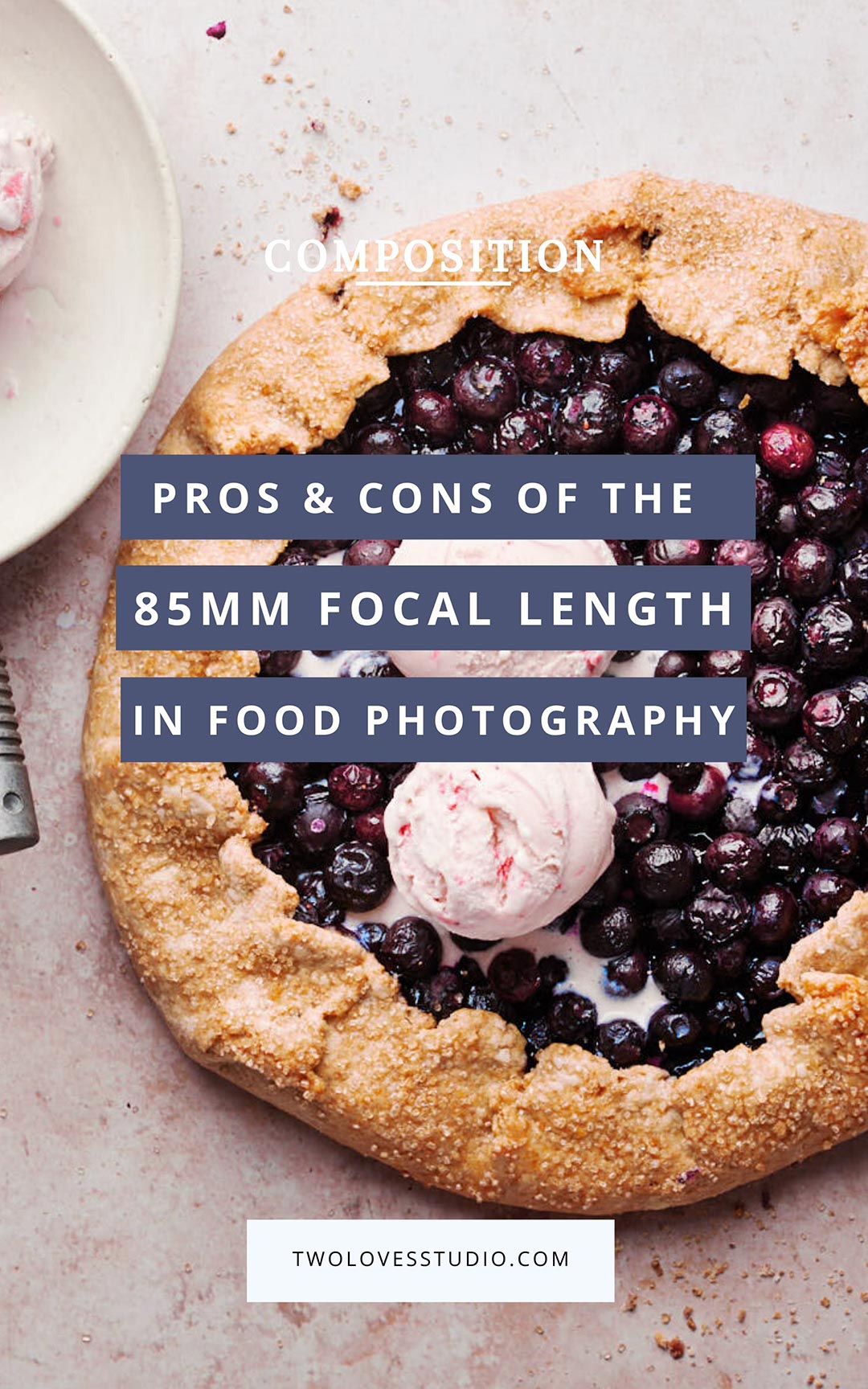
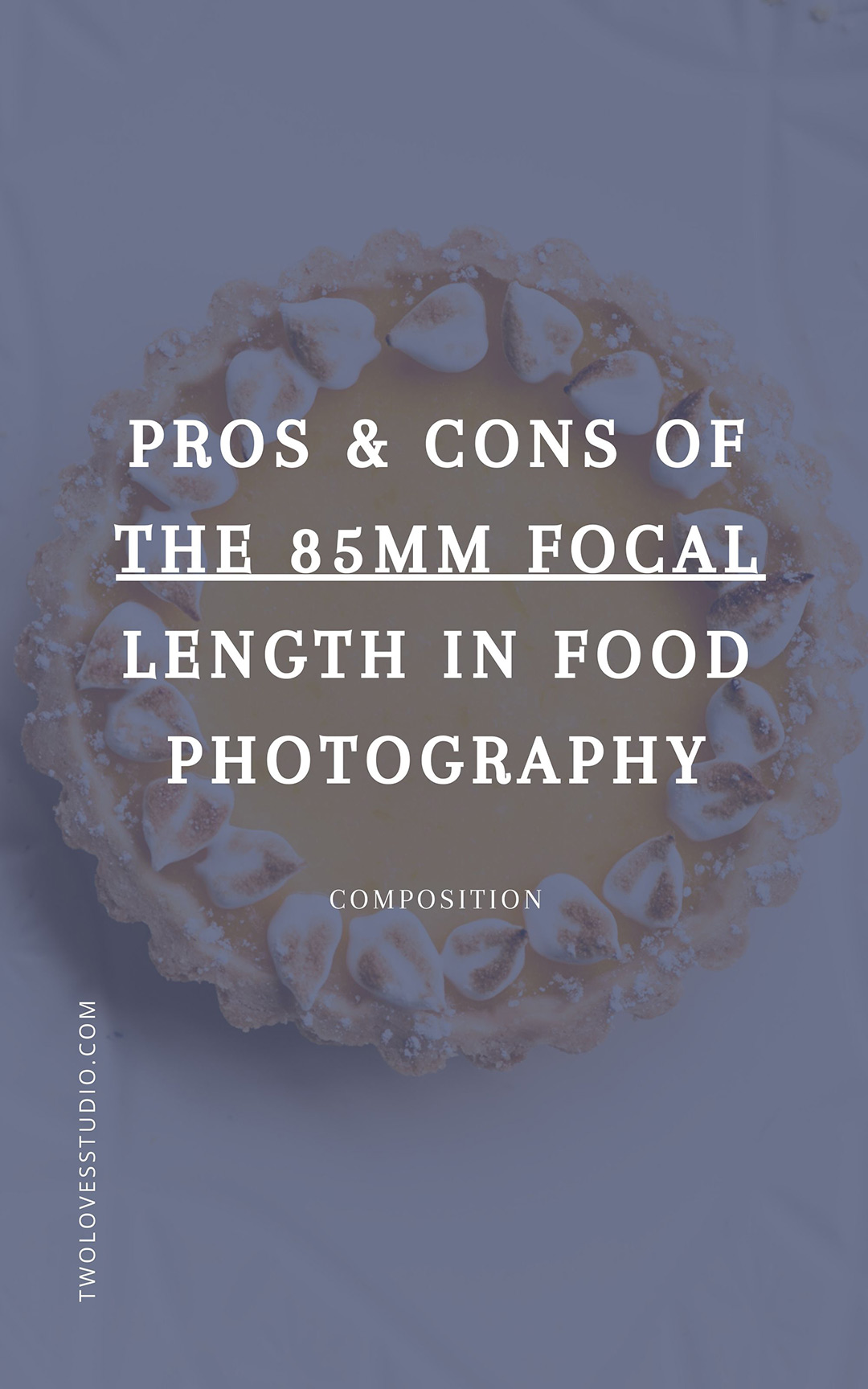
Connor
Well guess what, I actually like the 85mm non-macro photo better! The space around it is so minimalist and beautiful, allowing lots of details and interesting shadows that draw your eye to the subject. I have the 85mm 1.8 G and I’ve been using it for some product photography recently and yeah, the focusing distance is pretty annoying for close-ups.
Rachel
I totally agree with you too Connor! I always find it’s a good insurance policy to get a little closer with the macro so I have the shot and it will be better resolution than just cropping in. It’s just so annoying sometimes when the distance is so close, but that’s all part of the troubleshooting process of being a photography right!
Ashley
Hi Rachel!
Is an 85 mm tilt lens have the same advantages/capabilities as the 85mm you’re talking about here ? I know it has the tilt and shift function but just wanted to know if having both with make the 85mm lens useless?
Rachel
Yes! So the focal length will be the same, and the angle of view will be the same. It’s just that you have additional abilities to capture even more options with angle of view. But in terms of focal length, they are the same. In terms of focal length it might be redundant to have both an 85mm and an 85mm tilt-shift, but each lens will have its own features that you might need. Like different maximum aperture, autofocus. If you’re just building your kit, I would say not to get both. You could instead do a 90mm macro and then the 85mm tilt-shift.
Ashley
Yes I’m thinking that eventually tilt shift, so just wondering if getting the 85mm now would be a waste. But I do love love your 85 mm pics!!!
Ash
Rachel
Is there a huge difference between Canon EF 85mm f1.4L IS USM versus f1.8 USM?
Rachel Korinek
Hey Rach! There is always a difference between lenses and it can be quite in-depth. Each lens is different so I always recommend checking out some of the reviews. However, in terms of the aperture, it really depends on what you want to create creativity. The 85mm is typically a portrait lens so many portrait photographers love the shallow depth of field which we don’t often use for food. I rarely, go under f/2.5 with this lens. I usually shoot around f/4.5-f/8 with this lens. So it comes down to budget right! If you don’t want to spend the extra $$, you’ll be happy with the 85mm 1.8 aperture 🙂
HMCB
Your articles are so good. Thank you. With regards that lost comparison, I understand you couldn’t get as close as you could with the macro, but for a lot of us the work is not being used in print. So take that last shot: on a 24 megapixel camera, the RAW file is 6,000 pixels (roughly) on the long side. Most websites hero images are at 1800 and at most 2200 pixels. So in this case, even with cropping in, and then reducing the overall size of the photo to let’s say 1800, would yield an incredibly sharp and detailed photo, wouldn’t you agree?
Rachel Korinek
You can definitely get further back and crop in. The thing to remember with the 85mm is that its minimum focusing distance is three times that of other wide lenses. Which can be tough if you’re in a smaller space.
Mike
Are we crazy to be using the Canon 24-70 but keeping it at 70? Or would we be better off getting the 85? We use the 5dMkIV.
Thanks!
Rachel Korinek
Hi Mike, definitely not crazy if that’s working for you. I find that extra 15mm to be quite flattering. The other benefit of the 85mm is that you will get higher apertures like 1.8 or 1.2 if you’d like those options. If you can, rent the lens and test it out to compare 🙂
Tina
Hi Rachel! Great share on all posts thank you 🙂
I’m now in a infinity loop in deciding 50mm or 85mm. I have a Canon cropped sensor body (650D w/ 1.6x crop factor). I currently have an old Canon 35-135mm f/3.5-5.6 IS STM lens.
I’m currently looking for an upgrade within my budget:
Canon 50mm f/1.4 USM
Canon 85mm f/1.8 USM
My photography style is usually quite close up (but not too macro), and sitting at a table in a restaurant shooting food in front of me, but also sometimes chef in action a little further away. I’ve included a link to them.
I like the focal length of 85mm, but my concern is that 80cm of closest focus distance is too far if it’s the plate infront of me (prob just right for shooting chefs in a distance). Whereas 45cm focus distance for 50mm is more ideal for foods infront of me.
I then consider should I maybe get the 50mm with a 12mm extension tube.
Would be amazing to get your thoughts on this xx
Rachel Korinek
Hi Tina, I usually only recommend the 85mm on a full-frame camera and after you have a macro lens. It’s one of those lenses you can get after you have what I call the ‘staple’ lenses for food photography. I would suggest getting the 50mm over the 85mm especially for a cropped sensor as you will get more out of it with a cropped sensor. The 85mm has a terrible minimum focusing distance which will be made even harder on a cropped sensor. I like the idea of the 50mm and extension tubes. Hope that helps! x
Jovana
Hi Rachel,
I find your blog posts extremely useful when considering to buy any new lenses, thank you for all the tips. I know you are a Nikon photographer, but I saw that Canon now has RF 85mm f/2 STM macro lens, wondering if you have any thoughts on this one for food photography? It is quite affordable compared to others.
Thanks a lot!
Rachel Korinek
Hey Jovana – an 85mm macro would be awesome! I love the 85mm focal length but the minimum focusing distance is a drawback, so an 85mm macro would solve this problem. I do think a 100mm macro for Canon is slightly better for more compression for macro shots, but if you don’t have the budget this would be a great option!